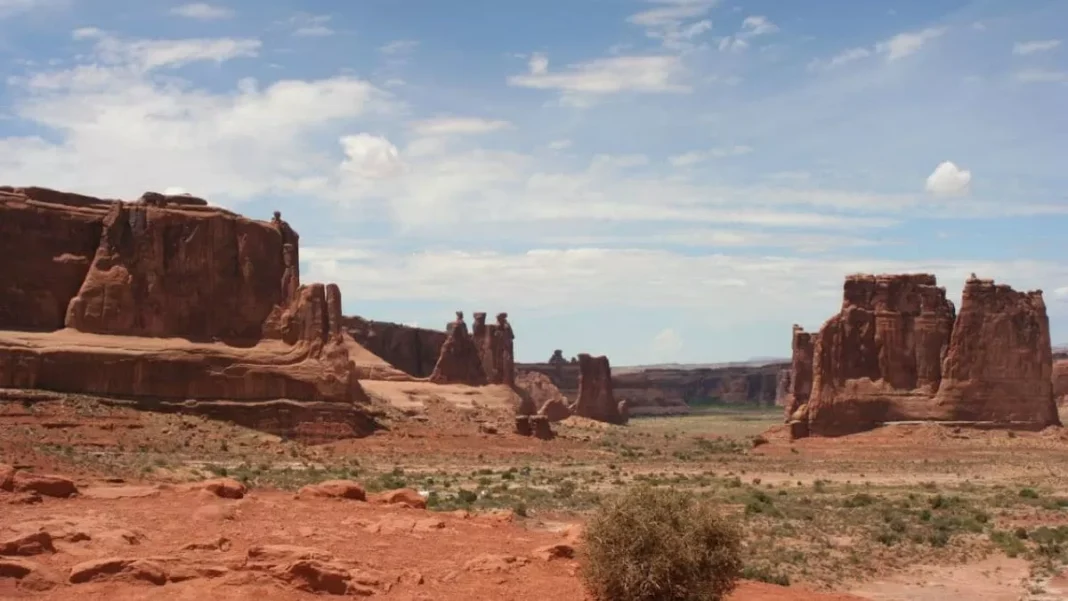A recent discovery by scientists has shed new light on the tectonic history of the Indian subcontinent. According to a study published in the journal Nature, a buried magma plume beneath Oman’s Salma Plateau, known as “Dani,” may have played a crucial role in altering the path of India’s tectonic movement during its collision with Eurasia 40 million years ago. This groundbreaking finding not only adds to our understanding of the Earth’s deep mantle forces, but also redefines how these forces can shape continents without any volcanic activity.
The Indian subcontinent, which was once a separate landmass, started its journey towards Eurasia around 140 million years ago. This movement, known as the Indian Plate’s northward drift, eventually led to the collision between the two landmasses, resulting in the formation of the Himalayan mountain range. However, the exact mechanism behind this collision and the subsequent formation of the Himalayas has been a subject of debate among scientists for decades.
The new study, led by Dr. Bernhard Steinberger from the German Research Centre for Geosciences, provides a new perspective on this long-standing question. Through a combination of geophysical data and computer simulations, the team of scientists has uncovered the presence of a buried magma plume beneath the Salma Plateau, which they believe played a crucial role in altering the Indian Plate’s path.
Unlike other magma plumes, Dani did not cause any volcanic eruptions on the surface. However, its presence has been linked to a change in the Indian Plate’s direction, causing it to shift towards the east instead of continuing its northward drift. This shift in direction is believed to have led to the formation of the Himalayas, as the Indian Plate collided with Eurasia at a different angle.
The discovery of Dani has significant implications for our understanding of the Earth’s deep mantle forces. It challenges the traditional belief that volcanic activity is necessary for the movement of tectonic plates. Instead, it suggests that even silent, buried magma plumes can play a crucial role in shaping continents and altering their paths.
Dr. Steinberger, the lead author of the study, explains, “This discovery is significant because it shows that deep mantle forces can have a significant impact on the Earth’s surface, even without causing any volcanic activity. It redefines our understanding of how continents can be reshaped by these forces.”
The study also highlights the importance of using a multidisciplinary approach to unravel the mysteries of the Earth’s deep interior. By combining data from different fields, such as geophysics, geochemistry, and computer simulations, scientists were able to piece together the puzzle of Dani and its role in the tectonic history of the Indian subcontinent.
The findings of this study have far-reaching implications for our understanding of other tectonic events around the world. It opens up new avenues for further research and could potentially lead to a better understanding of the Earth’s deep interior and its influence on the surface.
The discovery of Dani also has practical implications for the region. The Salma Plateau, which sits on top of the buried magma plume, is known for its oil and gas reserves. The presence of this plume could have a significant impact on the region’s geology and could potentially affect the extraction of these resources.
In conclusion, the discovery of the buried magma plume, Dani, beneath Oman’s Salma Plateau has provided a new perspective on the tectonic history of the Indian subcontinent. It has challenged traditional beliefs and redefined our understanding of how deep mantle forces can shape continents without any volcanic activity. This groundbreaking finding not only adds to our scientific knowledge but also highlights the importance of using a multidisciplinary approach to unravel the mysteries of the Earth’s deep interior.


